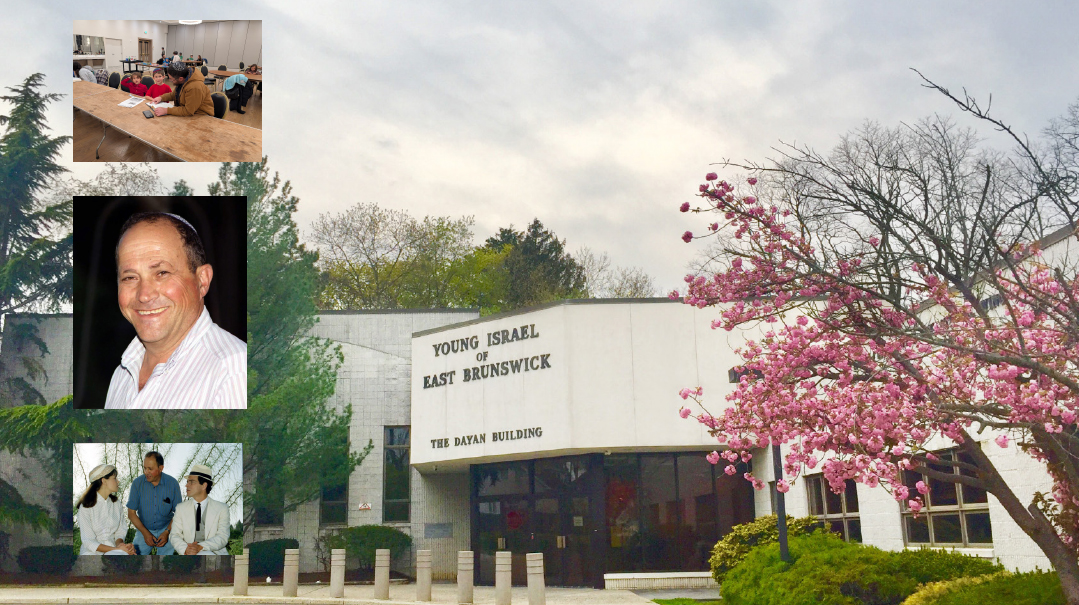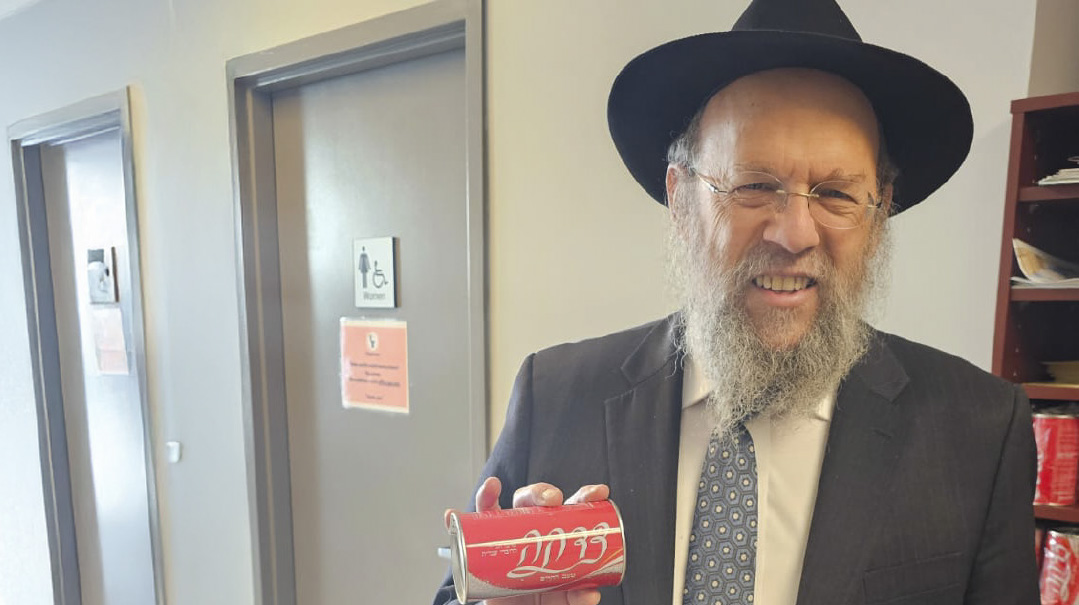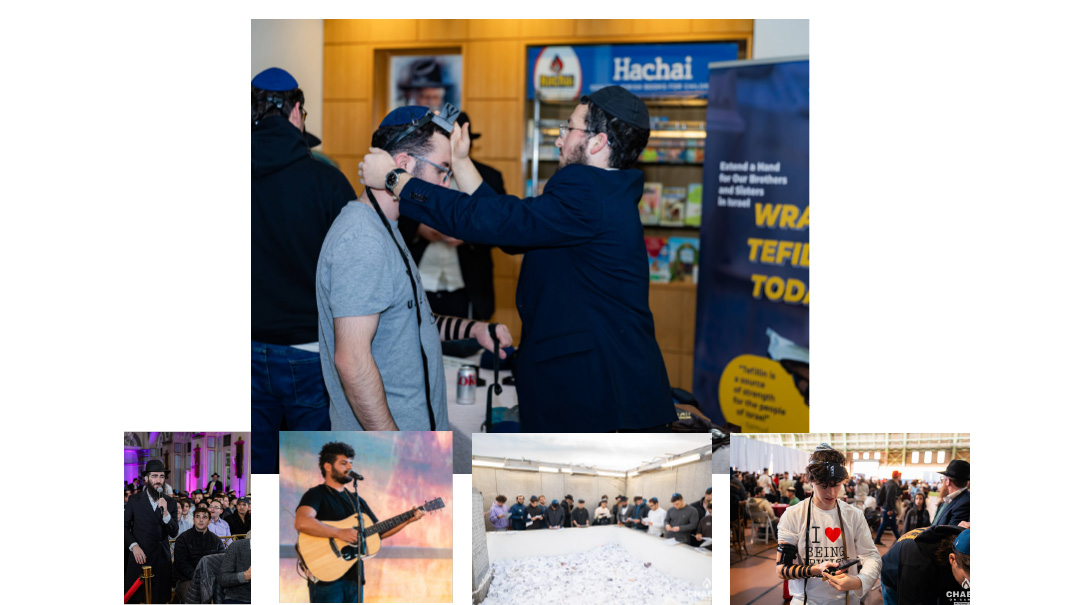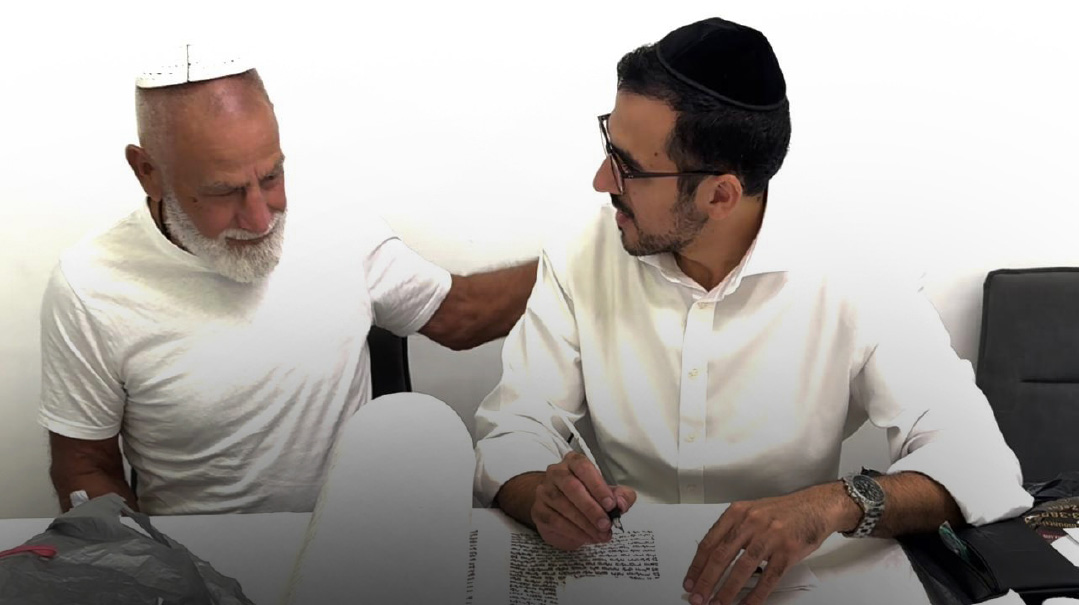Keep Dancing
| June 25, 2024“How can we connect our Simchas Torah joy to recent events? How will we be able to remember, and also, to dance?”

Where
Shuls, schools and community centers in London, Manchester and Leeds at the Weekend of Inspiration
Who
Over a thousand Jews from various communities across the UK gathered to receive chizuk from 40 speakers from Israel
My takeaway
At the airport on my way back to Israel, when the customs agent asked the standard security question, “Has anyone given you anything to take for someone?” I wanted to answer a resounding “Yes! I’ve received an abundance of support, concern, love, prayer, and messages of unity from the Jews of London to Israel.”
I was telling a friend of mine, a secular Israeli woman from Ramat Hasharon, about my upcoming trip to the UK as one of 40 speakers from Israel bearing messages of chizuk and achdus. Each individual contributor is significant, but so many people coming together demonstrated our collective strength. More than anything else, we’d be showing the communities of the UK that Israel cares, and that we are all part of one unified Jewish world.
“That’s wonderful for the Jews of England,” she said wistfully. “When will you organize something like that in Israel?”
Her words stung. While diaspora communities know how to derive chizuk, most Israelis aren’t part of an organized kehillah, and often have to fend for themselves.
On the Friday morning of the central shabbaton (the event ran from Thursday to Sunday in seven different communities), we gathered at the Village Hotel in London for the opening session. Amid the welcoming speeches and brachos, one message stood out. Rabbi Andrew Shaw, chief executive of Mizrachi UK, posed a poignant question to the leadership of United Synagogue: “What are we going to do next Simchas Torah?”
Jews have always known how to dance through adversity, he stated, but how can we connect our Simchas Torah joy to recent events? How will we be able to remember, and also, to dance?
Rabbi Shaw unveiled a new project to address this: Any shul worldwide can receive a special Torah mantle commemorating the kedoshim who were murdered al kiddush Hashem since last Simchas Torah. Each mantle will feature one name, and the shul that receives it will connect specifically to the memory of that kadosh. The project is spanning the globe — from London to Australia, New York to Tel Aviv — with sifrei Torah in hundreds of shuls connecting the entire Jewish world in one huge dance.
“This project will bring more and more Jews to dance with the sifrei Torah, strengthening the very Jewish life that our enemies tried to destroy,” he said.
Rabbi Shaw presented the first mantle, bearing the name of Capt. Daniel Perez Hy”d, a tank commander who saved many lives on Simchas Torah and whose body was identified only recently. Daniel’s father, Rabbi Doron Peretz, noted that Daniel would have turned 23 that Shabbos.
“The more difficult it is for us, the more convinced I am that we’ll overcome this,” Rabbi Perez said. “In Egypt we didn’t stand a chance against Pharaoh, and similarly in Persia against Achashverosh. We’re now writing new chapters of heroism and faith in our history books, and we will win. Jews all over are reexamining their identity, and this new awareness is already part of our victory.”
There seemed to be a strong desire for “more.” Teens observed that their nonreligious friends were increasingly interested in learning about Shabbos and kashrus, while adults noted a rise in newcomers to shuls across England. UK Jews are seeking greater knowledge and connection, and they’re eager to share their currency: One is making aliyah, another is staging a demonstration, a third is organizing a tefillah rally with hafrashas challah, others are bringing families of hostages to speak in the UK, and many are raising funds and forming solidarity missions to Israel.
Rabbi Nicky Liss of the Highgate Shul in London shared a powerful story: “On Motzaei Shabbos of parshas Tazria, April 12, Iran launched over 170 drones, 30 cruise missiles, and 110 ballistic missiles at Israel. Shabbos ended at about 8:45 p.m. UK time, and 15 minutes later the news broke.
“Since it was already too late to bring people together in person, the United Synagogue and its rabbinate arranged an online Tehillim and tefillah program at 11 p.m. (1 a.m. Israel time), expecting 40-50 participants. Instead, 1,000 people joined, maxing out the call. The overwhelming love for Israel led to another session an hour later, this time with upgraded technology and 2,500 participants. All in all, 3,500 joined that night to daven. Baruch Hashem, by Sunday morning we were able to send out a message encouraging everyone to say Mizmor Lesodah. We were zocheh to witness nissim geluyim that night! Who knows what role the mass online Tehillim played in that?”
After another standing-room-only session, one participant, Yael Jackson of London made the following observation: “A few years ago, the Covid crisis isolated us like never before. By contrast, the current crisis has united us like never before.”
Sivan Rahav-Meir, Israeli television news presenter, was voted by the Jerusalem Post as one of the 50 most influential Jews in the world. Sivan began her media career at age six, interviewing for a kids’ news magazine and youth television. She became religious as a teenager, and has since been working for national media and teaching Torah through various platforms, including the weekly podcast "Sivan Says." Her inspirational “Daily Thought” is translated to 17 languages.
(Originally featured in Mishpacha, Issue 1017)
Oops! We could not locate your form.







